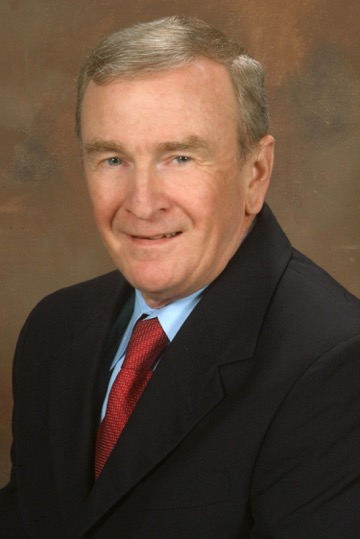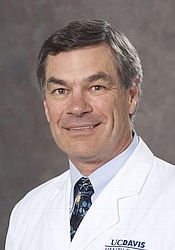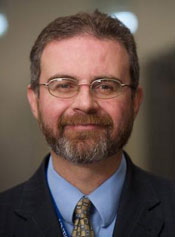



The American Board of Medical Specialties (ABMS) was formed in 1933, in part to support the professional development of physicians by setting standards that define competency in clinical care and to verify through the board certification process that individual specialists meet these standards. A secondary but also important role for the ABMS was to provide information to the general public concerning the certification status of individual practitioners.
The vast majority of medical professionals today agree that board certification is an important step in the professional development of any practitioner who will be involved in patient care. Indeed, AAPM defines a qualified medical physicist as one who, among other criteria, holds board certification in the subfield in which he or she practices clinically (Professional Policy 1-H, "Definition of a Qualified Medical Physicist").
By design, the board certification process that leads to initial certification confirms that a certified individual meets minimal standards that define safe and meaningful delivery of clinical care. Clearly, these standards evolve as a result of technological advances and improvements in the knowledge base associated with a medical specialty. This is especially true for those specialties, like medical physics, that are highly technologically driven. Therefore, documenting minimal competence at the time of initial certification may not be a good indicator of one's continued competence with new technologies developed many years later.
For board certification to continue to indicate minimal competence throughout a practitioner's career, some sort of ongoing evaluation of competence is needed. ABMS officially recognized this in 2000 when it mandated that all of it 24 member boards stop issuing lifetime certificates. In parallel, ABMS directed member boards to implement Maintenance of Certification (MOC) programs that enable continued evaluation of the six competencies associated with initial certification: medical knowledge, patient care and procedural skills, interpersonal and communication skills, professionalism, practice-based learning and improvement, and systems-based practice and The Six Competencies for Medical Physics.
The ABR last issued lifetime certificates in 2001, and, starting in 2002, certificates were valid for 10 years only. During this time, the ABR began the process of developing an MOC program as a pathway for board-certified medical physicists to remain certified throughout their careers. In 2012, 10-year certificates were discontinued, and the ABR moved instead to "Continuous Certification", where ongoing validity of certification depends on meeting the requirements of the MOC Program.
To be a meaningful indicator of continued competency in clinical care and thus bring value to the general public, an MOC program should, at a minimum, allow ongoing verification that a practitioner has command of the current treatment techniques and technologies associated with contemporary standards of care. The required level of competency should be on par with the standards that those attempting initial certification at that point in time need to meet. Moreover, a well-structured MOC program should bring value to diplomates by providing a means whereby they can continue professional development throughout their careers. The ABR's MOC Program was designed to satisfy both goals above. It comprises a four-part framework that evaluates on a continuous basis the six competencies mentioned above, which define clinical practice:
To meet the requirements of the ABR MOC Program, a medical physicist must document:
Meeting the ABR MOC requirements, therefore, provides ongoing evaluation and documentation of a medical physicist's command of contemporary techniques and technologies. Furthermore, participating diplomates receive feedback regarding their expertise with state-of-the-art technology, and any deficiencies can be addressed through focused self-study and follow-up evaluation.
It is not possible to know for certain whether or not an MOC program improves clinical care. In fact, some of our clinical colleagues, mostly in other medical specialties, have proposed arguments to suggest that at best, there is no value, and at worst, participating in an MOC program may actually distract specialists from providing quality care. To the contrary, we believe that based on its careful design, the ABR MOC Program is meaningful and enhances the quality of care provided by participating medical physicists. While many ABR diplomates with lifetime certificates who do not participate in MOC nonetheless engage in various continuing education activities throughout their careers, there is no systematic methodology or uniformly enforced professional obligation for them to do so. Therefore, there are likely practicing medical physicists who base their qualifications on board certification awarded many years or decades earlier, but who have not remained current with their skills and knowledge.
On the other hand, a medical physicist who is meeting the requirements of the ABR MOC Program is very likely to be knowledgeable about state-of-the-art imaging, as well treatment techniques and associated technologies, given that contemporary cognitive expertise and lifelong learning are explicitly evaluated through the ABR MOC Program. Most would agree that a medical physicist meeting MOC requirements has the potential to make more effective contributions to patient care than a medical physicist who has not remained current. This fact alone suggests very strongly that over time, the ABR MOC Program will enhance clinical care since the proportion of medical physicists who participate in the program will increase over time.
The value of the ABR MOC Program, however, is not defined solely through fewer "non-current" medical physicists practicing as a result of attrition of lifetime certificate holders. One could argue that simply completing some quantity of CME activities annually would be sufficient to enable maintenance of competency and knowledge of contemporary technologies. While lifelong learning and self-assessment are one component of the MOC framework, it is not possible to evaluate all aspects of professional clinical practice through simple CME. It is necessary to more rigorously evaluate cognitive expertise throughout one's career by providing useful feedback to the diplomate on his or her knowledge and skills, enabling focused continued learning on those topics identified as problem areas. The ABR MOC Program is designed to provide this feedback, thus enhancing the professional development of diplomates and giving them the best possible chance to provide high-quality care throughout their careers.
Finally, in order to remain current and meaningful into the future, the ABR MOC Program undergoescontinual review and revision by the ABR Board of Governors and the ABR Board of Trustees. Recent results of this self-study process include: (1) simplified attestation of Professional Standing; (2) simplified attestation of Lifelong Learning and Self-Assessment; (3) replacement of the written decennial MOC exam associated with Part 3 of the framework by a more continual evaluation of cognitive expertise (Online Longitudinal Assessment, or OLA), which provides meaningful and direct feedback to diplomates; and (4) implementation of an increase in the scope of how medical physicists can meet requirements for Part 4 of the framework (Participatory Quality Improvement Activities). As professional standards and societal expectations regarding the competence of healthcare providers continue to evolve, we anticipate further enhancements will be made to the ABR MOC Program to enable it to continue to meet the needs of our patients and diplomates into the future.
Back to Article List Next PreviousWe have noticed that you have an ad blocker enabled which restricts ads served on this site.
Please disable it to continue reading AAPM Newsletter